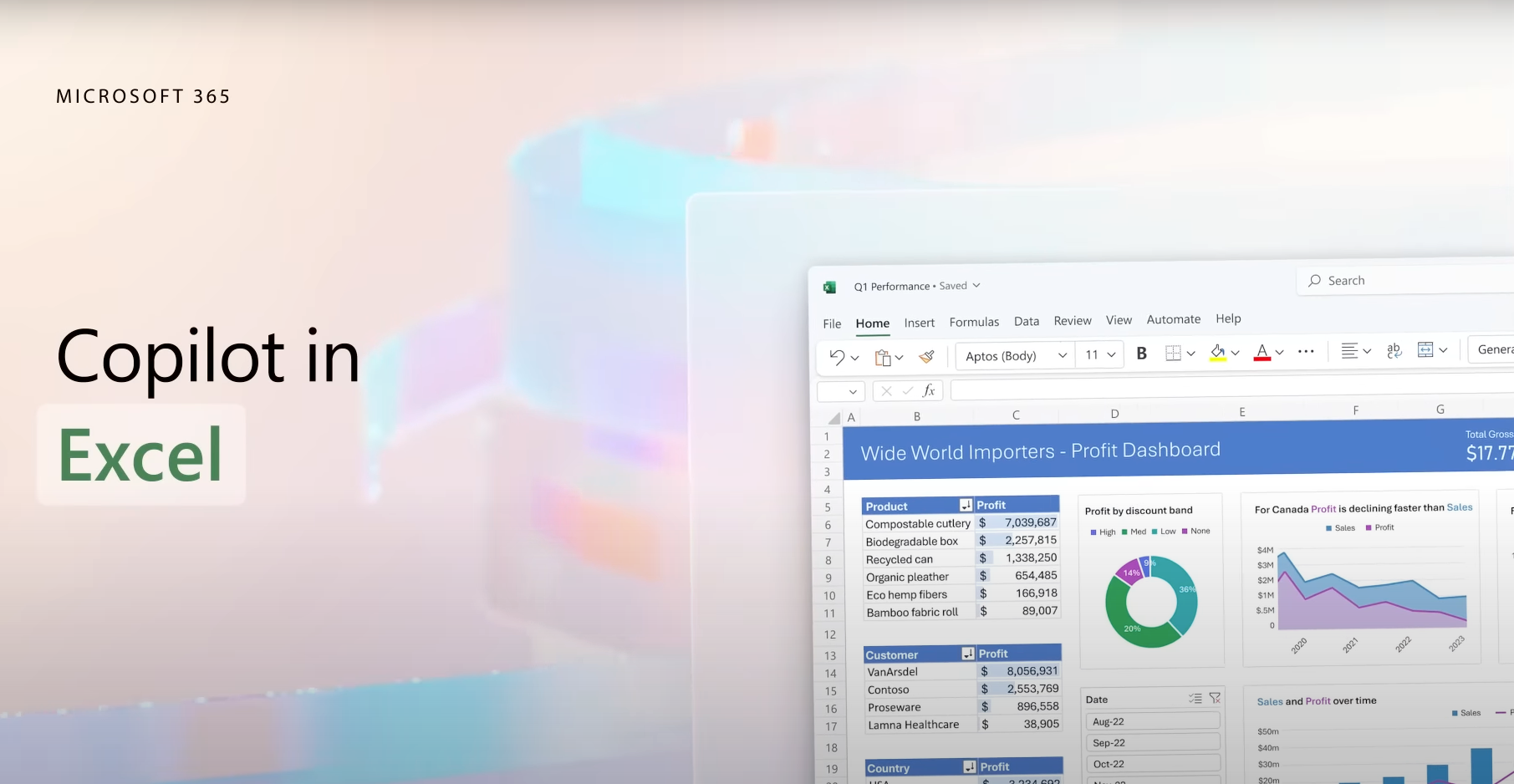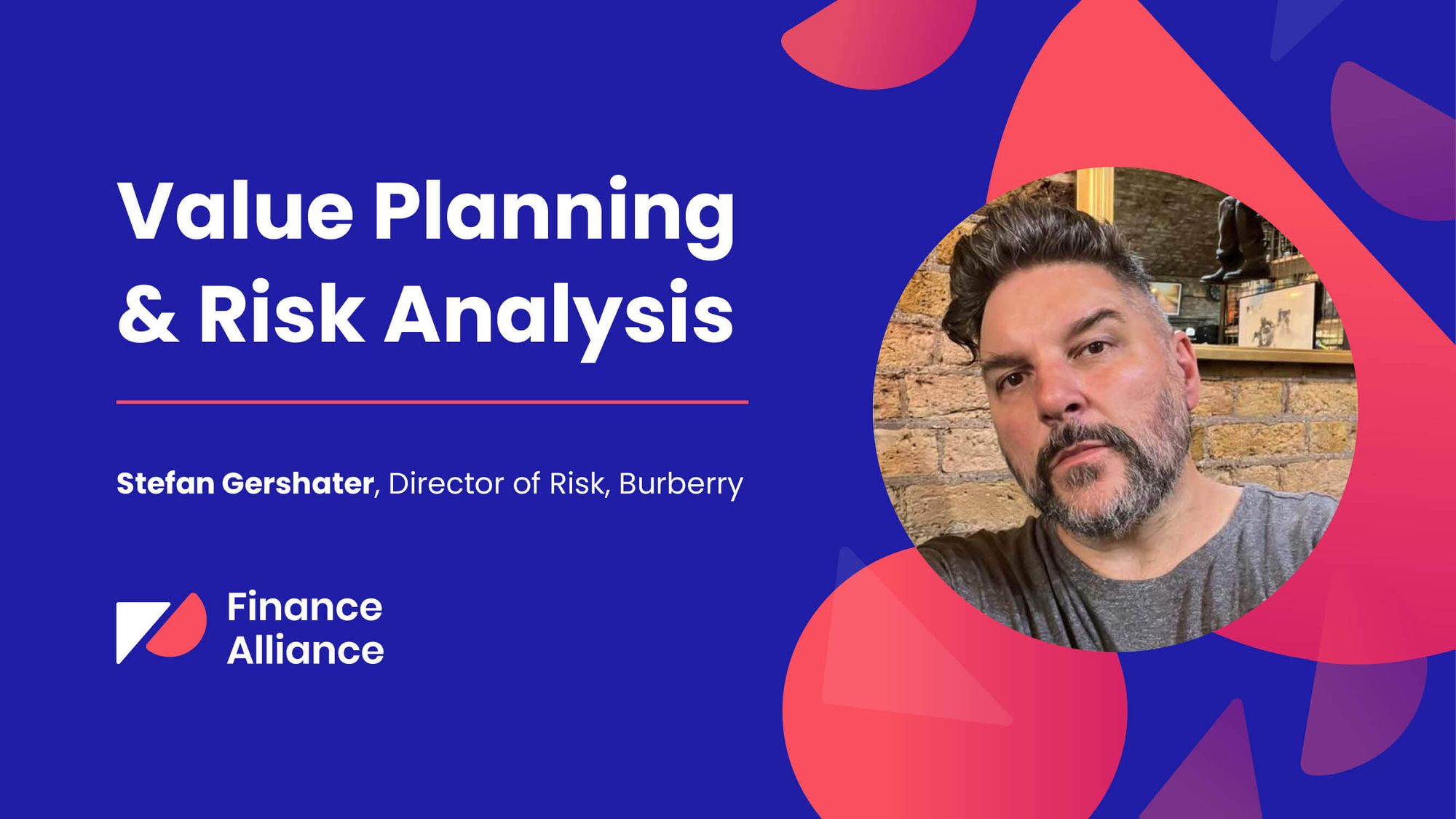Building a value creation plan that effectively unites FP&A and risk teams can be a game-changer for your organization.
In this blog post (and video), Stefan Gershater, the Director of Risk at Burberry, walks you through the process of collaboration between these two crucial teams to address both internal and external risks, while maximizing value in uncertain times.
You can also watch a clip from Stefan’s talk at our virtual FP&A Summit, where he talks about how FP&A and risk teams can work together to create value.
Topics discussed:
- How understanding external risks and setting key milestones can pave the way for better collaboration and informed decision-making.
- The significance of identifying internal risks and implementing controls to adapt and respond effectively.
- How incorporating audit into the value creation process can boost confidence and facilitate better decision-making among stakeholders.
Join us on this journey to transform your organization's approach to risk management and financial planning and unlock the true potential of a well-crafted value creation plan!
🎤If you want to hear more from great speakers like Stefan, don't miss our next virtual event, CFO Summit - 🗓 May 10, 2023!
The value creation plan continuum
A lot of risk teams will look at risk in isolation. They’ll give you (the finance team) a list of big scary things that may or may not happen. They'll talk about them once a year, and they'll get their time in the spotlight at the board, and that'll be that. They'll do okay and they'll probably get a bonus for that… and all is well with the world.
But feel free to demand more from your risk team.
Here’s how I think that can work.
Understanding external risks and setting key milestones
It starts with the external environment and flows through the following factors:
External risks
Identify external risks to guide ambitions and objectives.
Key milestones
Understand key milestones over three years which contribute to our financial and ESG objectives.
Internal risks
Identify internal risks impacting the ability to reach key milestones.
Controls
Identify investments to reduce risks to match risk tolerance.
Audit
Provide assurance over the previous steps.
This involves identifying external risks to guide ambitions and objectives. However, it’s better to separate external risks.
Why?
Well, you can’t control external risks. You can’t stop anything from happening. You can't invest capital, and you can't invest OPEX into changing macroeconomic conditions. You can't invest in preventing technological revolutions or invest in societal expectations and norms.
If you’ve completed an MBA, think back to what you learned about PEST analysis: Politics, Economics, Social, and Technology. All of that comes under this umbrella and neither you nor I can prevent these things from happening. I can't reduce the probability. But what I can do is sense it and prepare for it. And that's part of my job as a Director of Risk.
It then flows straight to you guys in finance. The key milestones, that’s you. So what are the key things we need to deliver?
"Risk teams and finance must work together on that to figure out how those external risks flow."
For example, I would model the risk using machine learning and AI, and then quantify that as best we can.
We're going to say to the exco, “Right, you set these targets, and this is what you decided you wanted to achieve with your business for the next three years.”
The risk team has modeled what might affect that. You can think of them like the tides, the wind, or the currents that push the business one way or the other.
Once we’ve set milestones, we can measure how external risk forces will affect us.
Finance teams can then course correct. So, as well as actuals from your business and recording revenue and margin figures, cash, and whatever else it is you're able to record and whatever your capabilities allow you to do, we're also now giving you an extra feed.
We're saying, “Yeah, the actuals went one way, but that could be because of market conditions, or we surpassed our expectations, and the market was going against us at the same time.” Let's be optimistic here.
So, we've got that flow of information starting from the outside, going into the business, and affecting whether or not we're going to achieve these milestones that we've set, which you helped us to do.

Identifying internal risks and implementing controls
That then flows into internal risks. So how am I going to respond to that? Here are just a few questions that you might need to consider:
- Do I need more people?
- Do I need fewer people?
- Do I need to put more pressure on my supply chain?
- What about the data that I'm using to support this information?
- What about commercial aspects?
- What about legal?
All those enablers that every business has, we look at those in a risk context.

And then the controls are our way of responding to that. So, the investments that I need to make to get those risks into some sort of level where I feel comfortable, that I think is going to enable those milestones to be delivered to respond to those external risks.
"That flow of information flows in both directions. We're sensing things, but we're also responding to them."
Creating confidence through audit
And then finally, we come to our friends in audit. They're creating a really rare commodity, and that’s confidence. They're creating confidence in those previous four steps.
We can really target those guys because they can add a lot of value. But if we target them appropriately across those external risks and across the key milestones, internal risks, and controls, we can target them at the things which are changing most rapidly or the things that give us the most cause for concern.
If we look at value creation in this continuum in this way, audit really comes into its own and it creates that vital confidence that decision-makers need in order to make decisions as effectively as possible.
FAQs - Value creation planning in finance and risk management
How do you write a value creation plan?
When you're crafting a value creation plan, you'll want to kick things off by setting clear objectives and pinpointing key performance indicators (KPIs). Dive into a deep analysis of your current financial and operational situation, and spot areas where you can improve or grow. Then, come up with initiatives that align with your objectives, and keep a close eye on progress to make sure everything's on track.
What are the four types of value creation?
There are four main types of value creation: operational, financial, strategic, and relational. Operational value creation is all about boosting efficiency and effectiveness. Financial value creation means fine-tuning your capital structure and financial performance. Strategic value creation revolves around competitive positioning and growth, while relational value creation focuses on building strong connections with stakeholders and customers.
What is a value creation strategy?
A value creation strategy is essentially a well-thought-out plan detailing how a company plans to create and increase value for its stakeholders. To craft this strategy, you'll need to identify key improvement areas, set measurable targets, and put initiatives into action that drive growth, profitability, and sustainability.
What is value creation in finance?
In the world of finance, value creation is all about raising a company's financial worth. You can achieve this by enhancing operational efficiency, allocating capital wisely, launching strategic growth initiatives, and nurturing stakeholder relationships. The end goal is to boost shareholder value and ensure the company stays financially healthy for the long haul.
What is value creation in risk management?
When it comes to risk management, value creation involves spotting, assessing, and mitigating risks that could put a dent in a company's financial performance and overall value. By managing risks effectively, companies can minimize potential losses, seize opportunities, and ultimately boost their value to stakeholders.
How can financial strategies be useful for value creation?
Financial strategies can be useful for value creation by optimizing capital allocation, improving financial performance, and fostering sustainable growth. By implementing effective financial strategies, organizations can reduce costs, increase revenues, manage risks, and create long-term value for stakeholders.
Don't miss our next virtual event, Chief Financial Officer Summit!
When? - 🗓 May 10, 2023
Check out our cutting-edge agenda full of leading keynote sessions and panel discussions and see what incredible speakers we have lined up for the event!
Did we mention it's free to attend live?
Register now.👇






